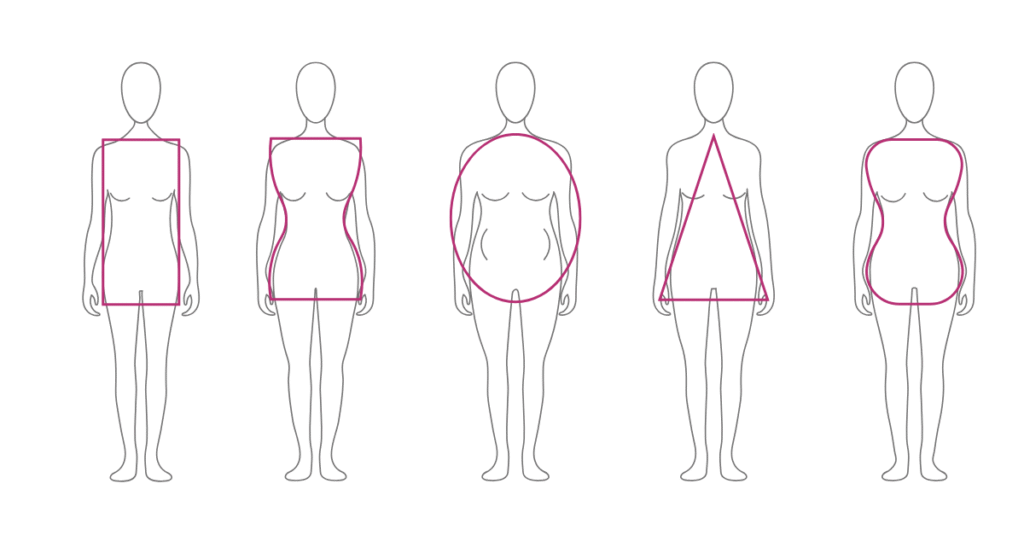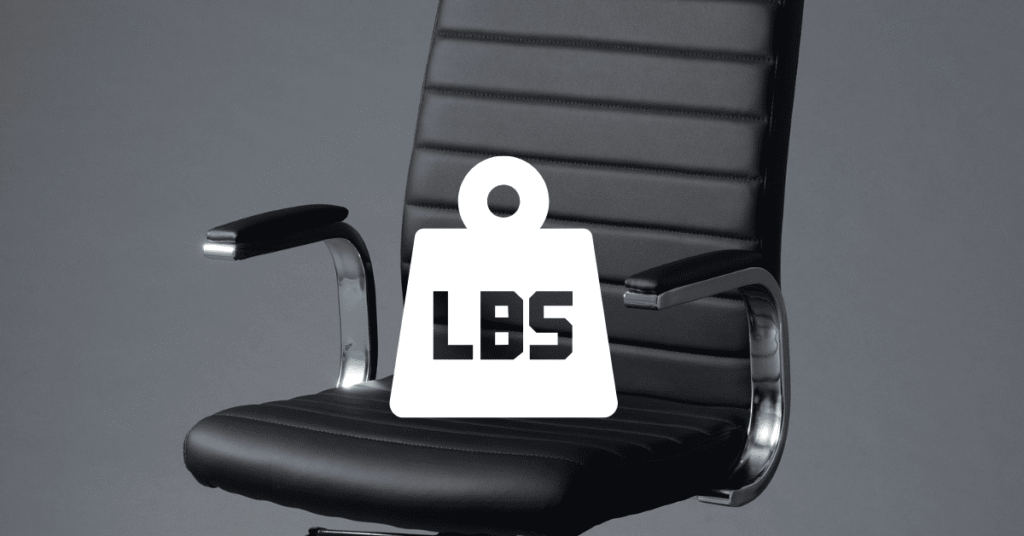Many people don’t think about the weight limit when they buy an office chair, but it’s really significant. Putting more weight on a chair than it can hold may make it less comfortable, supportive, or long-lasting. If you put too much weight on a chair, the cushions can sag, the chair might not be as stable, or parts of it might shatter. If the chair is too big for you, it can be hard to sit up straight, especially if you are short. If you don’t have the correct ergonomic support, you might not be able to work as hard or get sick. A detailed survey discovered that 63% of office workers reported pain in one or more parts of their bodies because their desks or chairs weren’t set up correctly.
You need to choose a chair that fits your body type if you want to be able to work for a long period without feeling fatigued or hurt. Most office chairs can hold up to 250 pounds, but heavy-duty chairs for bigger persons can take up to 500 pounds. According to OSHA, ergonomics are at fault for around a third of all work-related injuries in the U.S. If you don’t follow these regulations, these mishaps could happen more often. If you need a little ergonomic chair or a huge, tall one, checking the weight limit will help you sit up straighter, get more support, and work in a healthier environment.
Table of Contents
ToggleWhat Is Office Chair Weight Capacity?
The weight limit for an office chair is the highest weight it can bear without losing its shape, comfort, or ability to work. This figure has a direct impact on how safe, useful, and long-lasting the chair is. Using a chair too much could make it wear out faster, not support you well enough, or even The frames and bottoms of heavy-duty chairs for plus-size people are stronger and wider. Small ergonomic chairs are made for small people, so they fit and feel good
The Business and Institutional Furniture Manufacturers Association (BIFMA) sets the testing standards that most well-known companies follow. The ANSI/BIFMA X5.1 standard tests how well a chair can handle stress in real life. There are tests for static load to make sure the chair won’t shatter under the highest weight, testing for cyclic loading to replicate years of use, and tests for drops to see how well it can absorb impacts. These tests make sure that chairs that have been evaluated for weight may safely hold people of different body kinds. To learn more, click here: A short description of ANSI/BIFMA X5.1 testing
Standard Weight Limits for Office Chairs

It’s a good thing that not all seats are the same. If you know the different weight capacity groups, you might be able to find the correct chair for your body type and how you operate. This is a short guide to help you figure out how much support your desk chair needs:
Standard Office Chairs (up to 250 pounds)
These are the most common kinds of seats, and they work for many people. Standard chairs are perfect for most home offices and traditional workspaces since they can carry a lot of weight. But if you are close to or over this weight range, the chair may not last as long or feel as stable over time.
Chairs that weigh between 300 and 350 pounds
Mid-weight office chairs are designed to look beautiful, feel good, and give you good support all at the same time. They usually feature stronger frames, better materials, and more padding. This is perfect for folks who need more than the basics but not as much as the heavy-duty things.
Heavy-Duty Office Chairs (more than 400 lbs)
Heavy-duty chairs are strong and will endure a long time. They are perfect for big persons or anyone who needs a chair that will last. ANSI/BIFMA X5.1 requirements are normally very demanding, and these chairs are put through drop tests and cyclic loading tests to make sure they can handle a lot of stress.
Office Chair Weight Capacity Comparison Table
| Category | Weight Capacity | Typical Features | Best For | Example Models |
|---|---|---|---|---|
| Standard | Up to 250 lbs | Basic ergonomic adjustments, standard foam cushioning, nylon base | Average users in home or office setups | Herman Miller Aeron Size B, Steelcase Series 1, HON Ignition 2.0 |
| Mid-Weight | 300–350 lbs | Reinforced frame, thicker cushioning, higher-quality materials | Heavier users who want more comfort & durability | Steelcase Leap Plus (up to 400 lbs), HON Ignition Big and Tall |
| Heavy-Duty | 400+ lbs | Heavy-duty base, wide seat pan, steel frame, tested to ANSI/BIFMA standards | Plus-size users, 24/7 usage, call centers, dispatch | Herman Miller Aeron Size C (up to 350 lbs), HON Big and Tall, Safco Uber |
Office Chair Weight Capacity by Body Type

For Petite Individuals
People who are shorter than 5’4″ may not be able to sit comfortably in standard or large office chairs, and they may hurt for a long time. A lot of people are worried about having too much seat depth since it makes your feet uneven, puts pressure on your thighs, slows down your circulation, and hurts your lower back.
To keep their blood flow and posture optimal, OSHA Ergonomic Solutions suggests that shorter people should sit in a chair that is 14 to 16 inches high and 15 to 17 inches deep. Chairs for short persons can have shorter seat pans, lumbar support that can be changed, and frames that can hold between 200 and 250 pounds. The Steelcase Series 1, Herman Miller Sayl Chair, and Humanscale Diffrient World Chair are all wonderful options because they are light and support petite bodies effectively.
For Average-Weight Users
Most ergonomic office chairs are made for people who are between 5’4″ and 6’2″ tall and weigh between 125 and 250 pounds. The seats of these chairs are between 16 and 21 inches from the ground and can hold up to 250 pounds. This is excellent for maintaining your knees at a right angle, your feet flat, and your back supported.
Most people who work in offices are in this group; thus, the best brands make their best models to fit their needs. The Herman Miller Aeron Size B, Steelcase Series 2, and Branch Ergonomic Chair are all great choices because you can modify the lumbar support, tilt tension, and recline all at the same time. They all have an ANSI/BIFMA X5.1 rating, which implies they are safe, comfortable, and will last a long time if you use them every day.
How to Know if Your Chair Is Unsafe or Overloaded
It could look great, but it might be too heavy or getting old after years of use. If you don’t pay attention to these indications, you could get hurt, feel uncomfortable, or have things break down without warning.
Some common indicators are
- Making noise as you lean back or change the height
- The seat or backrest is wobbly.
- The gas cylinder is broken because the seat keeps sinking.
- Casters that are cracked or fractured and don’t roll right
- The weight isn’t evenly distributed; thus, it droops or leans.
These problems could mean that the chair is overly heavy or that some of its parts are wearing out. Look for cracks or bends in the base, frame, and wheels. Before you sit down, see if you feel solid or if you’re sliding or tilting. You should also check the manufacturer’s chair capacity table to make sure you are within the safe weight range
When to Repair vs Replace Your Chair
You don’t have to throw away a chair just because it has a problem. Some flaws are only skin deep, while others are symptoms of a greater concern with the building’s safety or construction. Knowing the difference can help you stay safe and comfortable and make better choices.
1. Damage to the appearance
If your chair has scratches, worn fabric, or color that is fading but still feels firm and supportive, you probably just need to fix it. You don’t have to buy a new one. To make it look and operate better, just get new arm pads, seat cushions, or casters. You may make the chair endure a lot longer by making little changes to its structure and making sure it stays under the weight limit for office seats.
2. Damage to the structure or safety issues
If your chair wobbles, sinks unexpectedly, creaks excessively, or has a fractured base or bent frame, it’s time to replace it. If the chair wasn’t made to hold your weight, these are symptoms that it can’t hold its own weight anymore. Using a chair that doesn’t support you properly can make you more likely to get hurt, and it usually costs more to fix than to buy a new one. In this instance, the best thing to do is to get a heavy-duty ergonomic chair or one that fulfills ANSI/BIFMA durability criteria.
Our office chair restoration vs replacement guide shows real examples so you’ll know exactly what to do.
How to Choose the Right Chair for Your Body Type
Before choosing your next chair, use this quick checklist to make sure it’s the right fit for your body and daily needs:
Weight Capacity – Check for BIFMA/ANSI to see if the chair can properly hold your weight.
Seat Dimensions – Is the height and depth of the seat right for your legs and posture?
Adjustability – Look for important features like adjustable lumbar support, tilt tension adjustment, and the height of the armrest.
Best Ergonomic Chairs by Body Type (At a Glance)
| User Type | Top Pick | Weight Capacity | Seat Dimensions (H×D×W) | Key Features |
|---|---|---|---|---|
| Petite | Humanscale Diffrient World Chair | Up to 250 lbs | 14.5–19” H × 15.5” D × 18” W | Lightweight build, slim seat pan, automatic lumbar fit |
| Steelcase Series 1 | Up to 250 lbs | 16.5–21.5” H × 17” D × 19.25” W | Seat depth adjustment, live-back technology | |
| Herman Miller Sayl | Up to 250 lbs | 15.5–20” H × 16” D × 18” W | Compact frame, dynamic back support | |
| Average | Herman Miller Aeron Size B | Up to 300 lbs | 16–20.5” H × 17” D × 20.25” W | Pellicle mesh, PostureFit SL, tilt limiter |
| Steelcase Gesture | Up to 400 lbs | 16–21” H × 18” D × 20” W | 360° arm movement, adaptive seat edge | |
| Branch Ergonomic Chair | Up to 275 lbs | 17–21” H × 19” D × 20” W | 7 points of adjustment, budget-friendly | |
| Plus-Size | Steelcase Leap Plus | Up to 500 lbs | 15.5–20.5” H × 19” D × 22.75” W | Reinforced frame, full adjustability, extra-wide seat |
| HON Ignition Big and Tall | Up to 450 lbs | 17–22” H × 22” D × 22” W | Heavy-duty casters, lumbar support, breathable mesh back | |
| Herman Miller Aeron Size C | Up to 350 lbs | 16–20.5” H × 18.5” D × 21.5” W | Tilt limiter, forward tilt, reinforced structure |
Conclusion & Final Takeaways
It’s not enough to just look at the features and style of an office chair; you also need to think about safety, performance, and fit. Knowing how much weight your ideal office chair can hold makes sure that it can support your body comfortably and reliably, lowering the chance of structural failure or long-term discomfort. Checking the chair’s weight rating, seat size, and adjustability before you buy it will help you choose one that really fits, no matter how small, average, or large you are. This will improve your posture, make the chair last longer, and safeguard your health over time. A chair that fits you properly isn’t a luxury; it’s an investment in your comfort and health for the long run.
FAQs
What is the weight limit for a typical office chair?
Most standard office chairs support up to 250 lbs, but always check the manufacturer’s specs.
How do I know if an office chair supports my weight?
Look for the chair’s weight capacity rating, usually listed in the product description or under ANSI/BIFMA standards.
Can I get a refurbished office chair that supports my body type?
Yes! Many refurbished office chairs are available in multiple sizes and weight capacities- just match the model to your needs.
What’s the difference between standard and heavy-duty chairs?
Standard chairs support up to 250 lbs, while heavy-duty chairs are built for 300-500+ lbs with reinforced parts and wider seats.
How long should a good ergonomic chair last?
With proper use and care, a quality ergonomic chair can last 8 to 12 years, sometimes even longer if refurbished.
Find Your Perfect Fit Without Breaking the Bank.
Shop our refurbished office chairs with ergonomic comfort for every body type.



